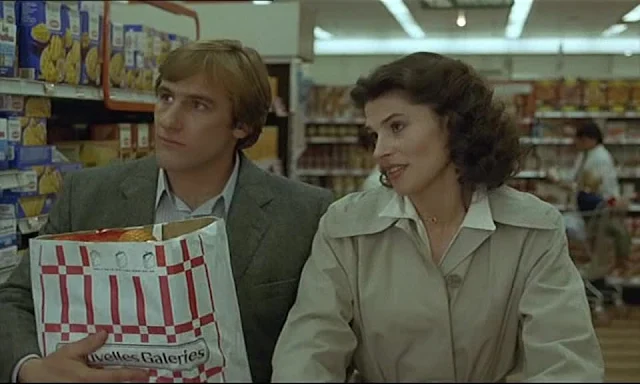 |
| Adam Driver and Golshifteh Farahani in Paterson |
Paterson: Adam Driver
Laura: Golshifteh Farahani
Doc: Barry Shabaka Henley
Donny: Rizwan Manji
Everett: William Jackson Harper
Marie: Chasten Harmon
Young Poet: Sterling Jerens
Method Man: Method Man
Japanese Poet: Masatoshi Nagase
Director: Jim Jarmusch
Screenplay: Jim Jarmusch
Poems by Ron Padgett
Cinematography: Frederick Elmes
Production design: Mark Friedberg
There have been lots of movies about poets. Some of them, like Jane Campion's 2009 film about John Keats,
Bright Star, are even good. But when have we ever seen a movie about poetry, let alone one as good as Jim Jarmusch's
Paterson? It's an homage of sorts to William Carlos Williams, who is perhaps the greatest claim to fame for the city of Paterson, N.J., and especially to his minimalist meditations on the quotidian: celebrations of things like refrigerated plums and white chickens beside a rain-glazed wheelbarrow. The protagonist of
Paterson (which is also the title of Williams's not-so-minimalist long poem) is Paterson, a bus driver in Paterson. He, too, writes poems about ordinary things such as Ohio Blue Tip matchboxes. His wife, Laura (who, as we are reminded, shares a name with the subject of Petrarch's sonnets), designs textiles with black-and-white patterns and longs to be a country-music singer and to start a cupcake business. They have a funny-clever-mischievous bulldog named Marvin. If all this sounds terribly cutesy, it doesn't feel that way while you're watching it. (No, I shouldn't speak for everyone. Let's just say it didn't feel that way for me.) It's kept grounded by Jarmusch's treatment of his characters, by a tinge of melancholy perhaps, or a sense that we're living in one of Jarmusch's urban constructs -- a Paterson of the imagination, like the Memphis or New Orleans or Cleveland Jarmusch imagined in his earlier films, places that look like the real thing but aren't. There are moments when
Paterson gets sentimental, but it never gets mushy -- it gets Jarmuschy. It celebrates the poetic imagination that can find an emotional world in a familiar detail, as when Paterson, on one of his nighttime visits to the neighborhood bar, passes a laundromat where Method Man is composing a rap (or however you say it -- this is not my scene) to a beat provided by the slosh of a washing machine. The film would be nothing without surefooted direction, but it also benefits immeasurably from Driver's sensitive, funny performance and from the delicacy of the interplay between him and Golshifteh Farahani as Laura. Watch, for example, the way Paterson struggles not to offend Laura after she serves him a brussels-sprout-and-cheddar-cheese pie for dinner and tries to beguile him into a compliment on her creation. Nothing really terrible happens in
Paterson: A gun is pulled in a bar by a frustrated lover, but it turns out to be a toy; some guys in a passing car warn Paterson, who is walking Marvin, that bulldogs are prime targets for dognapping, but it seems to be just a warning and not a threat; Paterson's bus breaks down, causing him an anxious moment because he feels responsible for his passengers, but help arrives. The big calamity of the film occurs near the end: Laura has constantly urged Paterson to make photocopies of the poems he keeps in manuscript in his notebook, but before he can do this, Marvin, who seems to be jealous of anything not centered on him (he growls whenever Paterson and Laura kiss), chews up the notebook. Paterson is dejected by the loss of the poems, but an encounter with a Japanese professor* who is visiting the city to pay homage to Williams reminds him that the poetic imagination is universal and indestructible. (It also helps that the professor gives Paterson a fresh notebook.)
*Played by Masatoshi Nagase, who was the young Japanese tourist in Jarmusch's
Mystery Train (1989).
Watched on Amazon Prime









